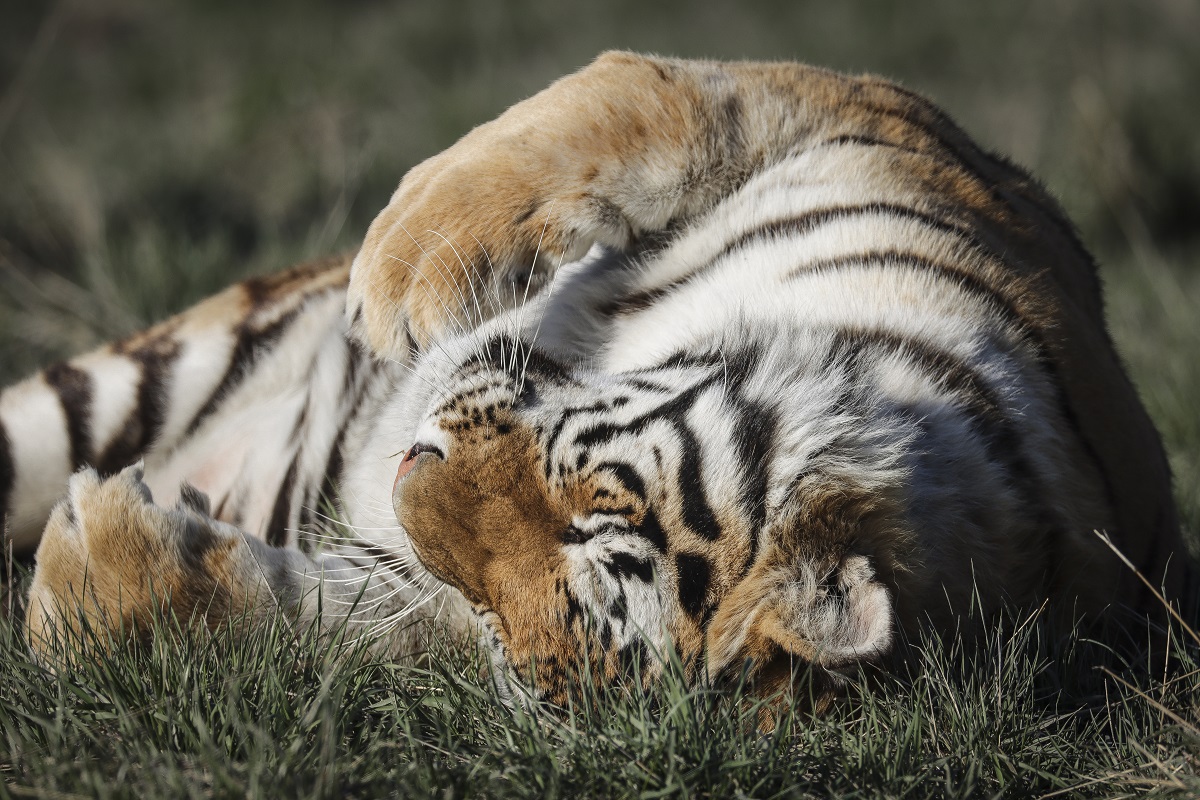US Congress approves spending extension, avoiding shutdown
The US Senate passed a spending measure early on Saturday, ensuring that federal government funding will continue through mid-March, the New York Times reported.
The four-year-old Malayan tiger named Nadia ~ and six other tigers and lions that have also fallen ill ~ are believed to have been infected by a zoo employee who wasn’t yet showing symptoms, zoo authorities claimed.

The zoo emphasized that there is "no evidence that animals play a role in the transmission of COVID-19 to people other than the initial event in the Wuhan market, and no evidence that any person has been infected with COVID-19 in the US by animals, including by pet dogs or cats." (Marc Piscotty/Getty Images/AFP
The superape has endangered the ape, to summon a variation of the title of Bert Hanstra’s seminal film. In the first known infection of a tiger or animal anywhere in the world, a member of the regal species has been infected with coronavirus at Bronx zoo in New York, the world’s most acutely afflicted city.
The four-year-old Malayan tiger named Nadia ~ and six other tigers and lions that have also fallen ill ~ are believed to have been infected by a zoo employee who wasn’t yet showing symptoms, zoo authorities claimed. The first animal started showing symptoms on 27 March, and all were doing well and expected to recover, said the zoo, which has been closed to the public since 16 March amid the outbreak.
Advertisement
The hope of recovery was presumptuous, in retrospect. Now that the first case has been confirmed, the inhabitants of the zoo deserve a thorough prognosis, if not aggressive treatment quite yet. Neither has been in evidence in New York. In the net, Covid-19 has acquired a new dimension, specifically a zoological perspective.
Advertisement
The finding raises new questions about transmission of the virus in animals. The US Department of Agriculture, which confirmed Nadia’s test result at its veterinary lab, said there were no known cases of the virus in US pets or livestock.
“There doesn’t appear to be, at this time, any evidence that suggests that the animals can spread the virus to people or that they can be a source of the infection in the United States,” has been the response of a veterinarian. The coronavirus outbreaks around the world are driven by person-to-person transmission, according to experts.
There doesn’t appear to be, at this juncture, any evidence that suggests that animals can spread the virus to people or that they can be a source of the infection. The first animal infection in the US and the first known in a tiger anywhere has bamboozled wildlife enthusiasts , the people, the medical fraternity, and veterinarians.
There have, however, been reports outside the US of pet dogs or cats getting infected after close contact with contagious people, including a Hong Kong dog that tested positive for a low level of the pathogen in February and early March. Hong Kong’s agriculture authorities concluded that pet dogs and cats couldn’t pass the virus to human beings, but could test positive if exposed by their owners.
Some researchers have been trying to probe the susceptibility of different animal species to the virus, and to determine how it spreads among animals, according to the Paris-based World Organisation for Animal Health. The parable to be drawn is that the animal is direly in need of protection from man.
Veterinary science confronts a unique challenge. It is just as well, therefore, that zoos, parks, wildlife sanctuaries and tiger reserves in India have been placed on the highest alert. The country is currently home to 75 per cent of the global tiger population. What will they know of a lockdown who only a caged existence know?
Advertisement